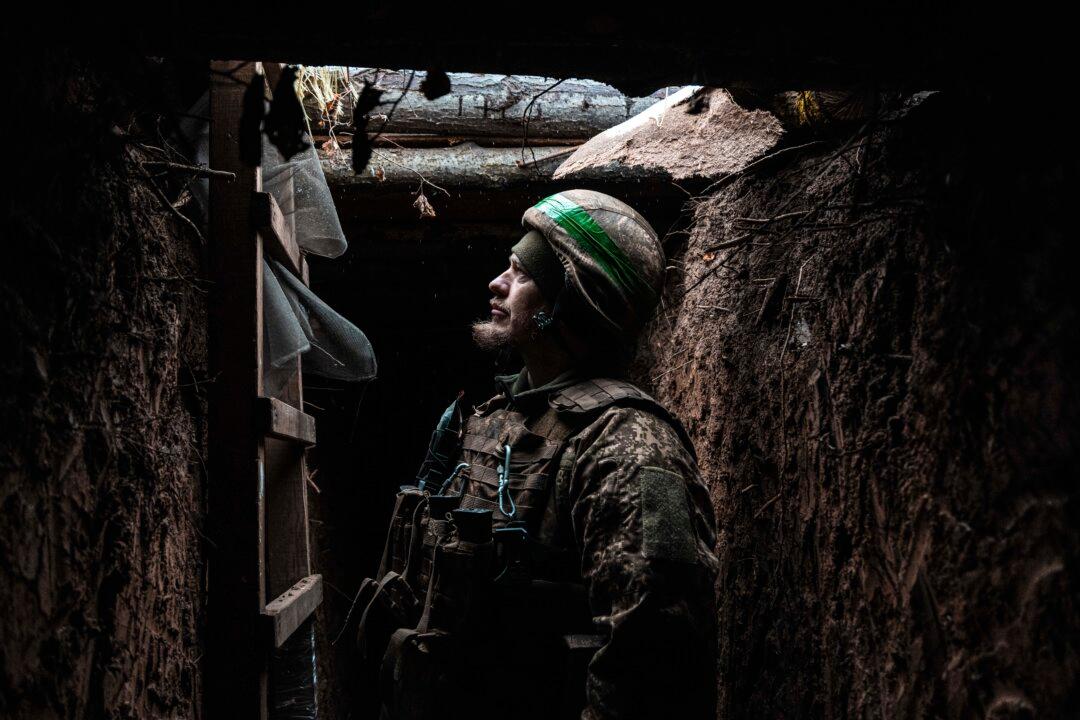U.S. Defense Secretary Lloyd Austin announced on Oct. 23 that there’s evidence that North Korea has deployed troops to Russia, although why exactly they are there remains unclear.
The Pentagon didn’t immediately back up Zelenskyy’s assessment but has been looking into the issue recently.
Speaking at a news conference during a visit to Rome on Oct. 23, Austin said, “We are seeing evidence that there are North Korean troops [in Russia].”
The defense secretary said U.S. analysts are continuing to assess the available information.
“What exactly they are doing is left to be seen. These are things that we need to sort out,” Austin said.
He didn’t specify how many North Korean troops have deployed to Russia.
North Korean Co-Belligerents?
Zelenskyy has suggested that these North Korean troops are preparing to join the war effort in Ukraine alongside Russian forces.“If they’re co-belligerents, if their intention is to participate in this war on Russia’s behalf, that is a very, very serious issue,” Austin said on Oct. 23.
If North Korean troops do indeed join the fight, they could help offset Russian losses after more than 2 1/2 years of highly attritional fighting that has ground down both sides.
Paul Davis, an adjunct professor for The Institute for World Politics, said if North Korean troops enter the fighting, Western troops may also consider joining the fight directly.
“Probably some of the Eastern European countries, Poland in particular, may be more engaged to add their troops into Ukraine, because putting North Korean troops directly into the conflict definitely steps over a red line,” Davis told The Epoch Times.

Michael DiMino, public policy manager at Defense Priorities, urged against NATO nations’ deploying troops to fight for Ukraine in response if North Korean troops do join the battle alongside the Russians.
“There’s a separate discussion to be had on what should we do with Ukraine, and should they ultimately be in NATO one day,” he said.
“But right now, they’re not. And I think sending NATO troops to fight and die in a war against Russia is an incredibly dangerous step to take.”
DiMino said the reported North Korean force in Russia doesn’t appear large enough to significantly change the course of the war.
“[It’s] important not to overreact to this or to give this more weight or credibility than it really deserves,” he said.
The North Korean troops could assist Russia without entering Ukraine, including by fighting alongside Russian forces seeking to drive back an ongoing Ukrainian incursion into Russia’s Kursk region.
Kyiv’s forces launched the cross-border operation in August in an apparent effort to draw Russian troops away from the fighting within Ukraine’s borders.
Davis and DiMino both agreed that North Korean forces could fight in the Kursk region without eliciting a strong reaction from Ukraine’s Western backers.
“If they’re only in there to defend Mother Russia, then we don’t have a lot of say,” Davis said. “It’s when they cross the border into Ukraine the problem would be.”

White House National Security Council spokesman John Kirby said it’s too soon to say what effect North Korean military presence in Russia may have “because we just don’t know enough about what the intention is.”
Kirby said the United States will continue to monitor the North Korean troop deployment closely.
The White House spokesman said if North Korean forces do join the fight, it would be a sign that Russian President Vladimir Putin is growing increasingly desperate.
Sanctioning Russia’s Backers
The U.S. government is preparing new steps to curb outside support for the Russian war effort.Yellen didn’t say which nations and entities would be targeted in the forthcoming sanctions.

While the United States aims to curb outside support for the Russian side of the conflict, it has been Ukraine’s primary benefactor in the ongoing war and has appropriated about $175 billion in Ukraine-related spending since 2022, when Russian forces invaded Ukraine.
This week, the United States and its partners in the Group of Seven are putting the final touches on another plan to provide Ukraine with a $50 billion loan, using frozen Russian assets as collateral.
Yellen said the U.S. contribution to this loan plan will be about $20 billion.







